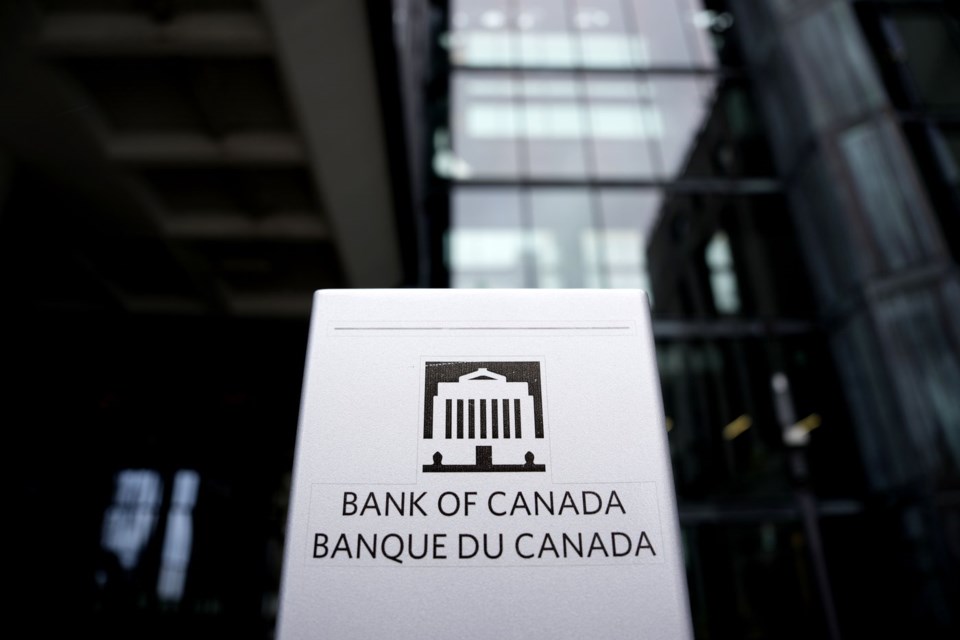Uncertainty about both the rapidly changing U.S. trade policy and the impact it’s having on the Canadian economy dominated discussion by the Bank of Canada governing council in the lead-up to its interest rate hold earlier this month.
The group also identified some key metrics for assessing the effect of tariffs on inflation as it makes monetary policy decisions, according to a summary of deliberations released on Wednesday about its April 16 decision.
The decision to keep the benchmark rate at 2.75 per cent came on the heels of U.S. President Donald Trump’s April 3 tariffs, which targeted a slew of countries and roiled markets.
The council headed by governor Tiff Macklem ultimately opted to keep its powder dry, with some members arguing a rate cut could end up being premature if tariffs and counter-tariffs led to a rapid rise in inflation.
The council considered two options during its meeting: a quarter-percentage-point cut or a hold.
Those arguing for a lower rate highlighted the need for timely action given interest rate cuts take time to work through the economy and noted the stock market turmoil increased concerns over a deeper U.S. recession.
"While there were differences in views, everyone agreed there was a great deal of uncertainty and the situation could change quickly," the summary of deliberations said.
"They also agreed they should be less forward looking than usual."
The governing council members distinguished between two layers of uncertainty, the summary said.
The first was a general lack of clarity about the path for U.S. trade policy, something reflected in its choice to use two possible future scenarios rather than a more standard economic forecast in making its interest rate call.
The second was the unknown impact of tariffs, including what fiscal policy might do to mitigate the negative effects of U.S. tariffs on economic activity.
Ultimately, the members agreed to maintain the 2.75 per cent rate and developed a framework to assess the opposing pressures on inflation (tariffs create weaker demand and higher costs, a particularly tricky situation for central banks to address with monetary policy).
That framework will see them pay attention to how tariffs might reduce demand for Canadian exports and how that lower demand would weigh on business investments, employment and household spending.
They will also consider by how much and how quickly cost increases are passed on to consumer prices and how inflation expectations evolve.
So far, members have agreed that the Canadian economy ended 2024 in good shape but will slow in 2025 as tariffs on exports to the United States and uncertainty about trade policy burden businesses and consumer sentiment.
They saw headline inflation as declining in the near term as oil prices and the elimination of the consumer carbon tax pull down inflation.
"Beyond that, it was difficult to predict the effect of opposing pressures on prices," the summary said.
"Tariffs and supply-chain disruptions could pull prices up, while weaker demand could push them down."
Amidst this backdrop, the governing council considered two economic scenarios. Rather than a typical economic forecast, these were created to offer two possible outcomes among many, "given the unusually large range of unknowns clouding the outlook."
The first was built around the possibility for inflation to be "relatively muted," if the tariffs are short-lived but uncertainty persists for a time.
The second scenario focused on tariffs being larger and permanent, leading to a recession and inflation rising above three per cent next year.
With Trump continuing to impose and lift tariffs seemingly at random as the council deliberated, they agreed that "it was not useful to try to pinpoint the position of U.S. trade policy given the continually shifting situation."
"It was nonetheless clear that outcomes closer to Scenario 2 would present a difficult trade-off for monetary policy between supporting growth and fighting inflationary pressures," their summary said.
This report by The Canadian Press was first published April 30, 2025.
Tara Deschamps, The Canadian Press




